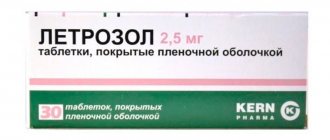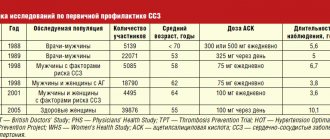Clapitax, 300 mg, film-coated tablets, 10 pcs.
From the blood coagulation system: often - bleeding. uncommon - increased bleeding time.
From the digestive system: very often - gastrointestinal bleeding, diarrhea, abdominal pain, dyspepsia. uncommon - gastric and duodenal ulcers, vomiting, nausea, constipation, bloating. rarely - retroperitoneal hemorrhage. very rarely - gastrointestinal bleeding and retroperitoneal hemorrhage with fatal outcome, pancreatitis, colitis (including ulcerative colitis or lymphocytic colitis), stomatitis, acute liver failure, hepatitis, abnormal liver function tests.
From the hematopoietic system: infrequently - thrombocytopenia, leukopenia, eosinophilia. rarely - neutropenia, including severe neutropenia. very rarely - thrombotic thrombocytopenic purpura, aplastic anemia, pancytopenia, agranulocytosis, severe thrombocytopenia, granulocytopenia, anemia.
From the nervous system: uncommon - intracranial hemorrhage (several fatal cases have been reported), headache, paresthesia, dizziness. very rarely - disturbances in taste perception, hallucinations, confusion.
From the sensory organs: infrequently - ocular hemorrhages (conjunctival, in the tissue and retina of the eye). rarely - vertigo.
From the cardiovascular system: very rarely - vasculitis, decreased blood pressure.
From the respiratory system: often - nosebleeds. very rarely - bleeding from the respiratory tract (hemoptysis, pulmonary hemorrhage), bronchospasm, interstitial pneumonia.
From the immune system: very rarely - serum sickness, anaphylactoid reactions.
From the skin and subcutaneous tissues: often - subcutaneous bruising. uncommon - rash, itching, purpura (subcutaneous hemorrhage). very rarely - bullous dermatitis (toxic epidermal necrolysis, Stevens-Johnson syndrome, erythema multiforme), angioedema, erythematous rash, urticaria, eczema, lichen planus.
From the musculoskeletal system: very rarely - hemorrhages in muscles and joints, arthritis, arthralgia, myalgia.
From the urinary system: infrequently - hematuria. very rarely - glomerulonephritis, increased concentration of creatine in the blood.
Other: often - bleeding from the site of vascular puncture. very rarely - fever.
Clapitax in Moscow pharmacies
Oral anticoagulants: simultaneous use of clopidogrel and oral anticoagulants may increase the intensity of bleeding, and therefore the use of this combination is not recommended.
Glycoprotein llb/llla inhibitors: Concomitant use of glycoprotein llb/llla inhibitors requires caution in patients with an increased risk of bleeding (trauma, surgery, or other pathological conditions).
Acetylsalicylic acid (ASA): has no effect on clopidogrel-induced inhibition of ADP-induced platelet aggregation, but clopidogrel potentiates the effect of ASA on collagen-induced platelet aggregation. However, simultaneous administration of 500 mg ASA 2 times a day for one day does not significantly prolong the bleeding time caused by taking clopidogrel.
Heparin: The simultaneous use of these drugs requires caution.
Thrombolytics: The safety of concomitant use of clopidogrel, fibrin-specific or non-fibrin-specific thrombolytic drugs and heparin has been studied in patients with acute myocardial infarction. The incidence of clinically significant bleeding was similar to that observed in the case of combined use of thrombolytic agents and heparin with ASA.
Nonsteroidal anti-inflammatory drugs (NSAIDs): Concomitant therapy with NSAIDs, including cyclooxygenase-2 (COX-2) inhibitors and clopidogrel, should be used with caution.
Inhibitors of the CYP2C19 isoenzyme: simultaneous use with strong or moderate inhibitors of the CYP2C19 isoenzyme should be avoided.
Inhibitors of the CYP2C19 isoenzyme include: omeprazole and esomeprazole, fluvoxamine, fluoxetine, moclobemide, voriconazole, fluconazole, ticlopidine, ciprofloxacin, cimetidine, carbamazepine, oxcarbazepine and chloramphenicol.
Proton pump inhibitors: Concomitant use with omeprazole or esomeprazole should be avoided. Concomitant use of clopidogrel with pantopraz is possible.
Selective serotonin reuptake inhibitors (SSRIs): Because SSRIs impair platelet activation and increase the risk of bleeding, concomitant use of SSRIs with clopidogrel should be done with caution.
With medicinal products that are substrates of the CYP2C8 isoenzyme: caution should be exercised when co-administering clopidogrel and medicinal products primarily eliminated from the body by metabolism via the CYP2C8 isoenzyme (for example, repaglinide, paclitaxel) due to the risk of increasing their plasma concentrations.
Clapitax tab p/plen obol 75mg N28 (Esko)
Oral anticoagulants The simultaneous use of clopidogrel and oral anticoagulants may increase the intensity of bleeding, and therefore the use of this combination is not recommended. Clopidogrel at a dose of 75 mg per day does not affect the pharmacokinetics of warfarin and does not change the International Normalized Ratio (INR) value in patients taking long-term warfarin. However, concomitant use of warfarin with clopidogrel may increase the risk of bleeding due to the independent effect of these drugs on hemostasis (see section "Special Instructions"). Glycoprotein IIb/IIIa inhibitors Prescribing glycoprotein IIb/IIIa inhibitors together with clopidogrel requires caution in patients with an increased risk of bleeding (in cases of trauma and surgery or other pathological conditions) (see “Special Instructions”). Acetylsalicylic acid Acetylsalicylic acid does not change the effect of clopidogrel, which inhibits ADP-induced platelet aggregation, but clopidogrel potentiates the effect of acetylsalicylic acid on collagen-induced platelet aggregation. However, simultaneous administration of acetylsalicylic acid 500 mg 2 times a day for 1 day with clopidogrel did not significantly prolong the bleeding time caused by taking clopidogrel. There may be a pharmacodynamic interaction between clopidogrel and acetylsalicylic acid, which leads to an increased risk of bleeding. Therefore, although in clinical studies patients will receive combination therapy with clopidogrel and acetylsalicylic acid for up to one year, caution should be exercised when using them concomitantly. Heparin According to a clinical study conducted with healthy volunteers, when taking clopidogrel, no change in the dose of heparin was required and its anticoagulant effect did not change. Concomitant use of heparin did not change the inhibitory effect of clopidogrel on platelet aggregation. There may be a pharmacodynamic interaction between clopidogrel and heparin, which may increase the risk of bleeding, so the simultaneous use of these drugs requires caution. Thrombolytics The safety of concomitant use of clopidogrel, fibrin-specific or non-fibrin-specific thrombolytic drugs and heparin has been studied in patients with acute myocardial infarction. The incidence of clinically significant bleeding was similar to that observed in the case of combined use of thrombolytic agents and heparin with acetylsalicylic acid. Nonsteroidal anti-inflammatory drugs (NSAIDs) When clopidogrel is used concomitantly with NSAIDs, the risk of bleeding may be increased. In a clinical study conducted in healthy volunteers, coadministration of clopidogrel and naproxen increased occult gastrointestinal blood loss. However, due to the lack of studies on the interaction of clopidogrel with other NSAIDs, it remains unknown whether there is an increased risk of gastrointestinal bleeding when taking clopidogrel together with other NSAIDs. Therefore, the use of NSAIDs, including COX-2 inhibitors, in combination with clopidogrel should be used with caution (see “Special Instructions”). Selective serotonin reuptake inhibitors (SSRIs) Because SSRIs impair platelet activation and increase the risk of bleeding, concomitant use of SSRIs with clopidogrel should be used with caution. CYP2C19 inhibitors Since clopidogrel is metabolized to its active metabolite in part by CYP2C19, the use of drugs that inhibit this system may lead to decreased levels of the active metabolite of clopidogrel and a decrease in its clinical effectiveness. The clinical significance of this interaction remains unknown, but as a precaution, it is recommended to avoid concomitant use of clopidogrel with drugs that inhibit CYP2C19 (omeprazole, esomeprazole, fluvoxamine, fluoxetine, moclobemide, voriconazole, fluconazole, ticlopidine, ciprofloxacin, cimetidine, carbamazepine, oxcarbazepine, chloramphenicol). Proton pump inhibitors Omeprazole 80 mg once daily, taken concomitantly with clopidogrel or 12 hours apart after clopidogrel, reduces exposure to the active metabolite by 45% after a loading dose and by 40% after a maintenance dose. This reduction results in a decrease in platelet aggregation inhibition of 39% and 21%, respectively. It is assumed that esomeprazole has a similar effect on the activity of clopidogrel. Observational and controlled clinical studies have provided conflicting data regarding the clinical significance of this interaction (as measured by the risk of major cardiovascular events). As a precautionary measure, it is not recommended to use clopidogrel in combination with omeprazole and esomeprazole. If it becomes necessary to prescribe proton pump inhibitors concomitantly with clopidogrel, the drug with the least CYP2C19 inhibition (pantoprazole or lansoprazole) should be used. When used simultaneously with pantoprazole at a dose of 80 mg 1 time per day, the concentration of the active metabolite of clopidogrel in the blood plasma decreases by 20% after taking a loading dose and by 14% after taking a maintenance dose of clopidogrel. In this case, inhibition of platelet aggregation decreases by 15% and 11%, respectively. Other combination therapy Since clopidogrel is metabolized to its active metabolite in part by the CYP2C19 system, the use of drugs that inhibit this system (for example, omeprazole) may lead to a decrease in the level of the active metabolite of clopidogrel and a decrease in its clinical effectiveness. Concomitant use of drugs that inhibit the CYP2C19 system is not recommended. If proton pump inhibitors are to be taken concomitantly with clopidogrel, a proton pump inhibitor with the least CYP2CI9 inhibition, such as pantoprazole, should be used. A number of clinical studies were conducted with clopidogrel and other concomitantly prescribed drugs to study possible pharmacodynamic and pharmacokinetic interactions, which showed that: - when clopidogrel was used together with atenolol, nifedipine, or with both drugs at the same time, no clinically significant pharmacodynamic interaction was observed; - with simultaneous administration of phenobarbital, cimetidine or estrogens, no significant effects on the pharmacodynamics of clopidogrel were found; - the pharmacokinetic parameters of digoxin or theophylline did not change when they were used together with clopidogrel; - antacids did not reduce the absorption of clopidogrel; - According to the results of the CAPRIE study, phenytoin and tolbutamide can be safely used concomitantly with clopidogrel, although data obtained from studies with human liver microsomes indicate that the carboxyl metabolite of clopidogrel may inhibit the activity of the CYP2C9 isoenzyme. It is unlikely that clopidogrel can affect the metabolism of other drugs, such as phenytoin and tolbutamide, as well as NSAIDs, which are metabolized by the CYP2C9 isoenzyme. Angiotensin-converting enzyme (ACE) inhibitors, diuretics, beta-blockers, slow calcium channel blockers, lipid-lowering drugs, hypoglycemic agents (including insulin), coronary vasodilators, antiepileptic drugs, hormone replacement therapy drugs and glycoprotein IIb/IIIa inhibitors - in clinical studies no clinically significant adverse interactions were identified.
Clapitax instructions for use of the drug
From the blood coagulation system:
often - bleeding; uncommon - increased bleeding time.
From the digestive system:
very often - gastrointestinal bleeding, diarrhea, abdominal pain, dyspepsia; uncommon - gastric and duodenal ulcers, vomiting, nausea, constipation, bloating; rarely - retroperitoneal hemorrhage; very rarely - gastrointestinal bleeding and retroperitoneal hemorrhage with fatal outcome, pancreatitis, colitis (including ulcerative colitis or lymphocytic colitis), stomatitis, acute liver failure, hepatitis, abnormal liver function tests.
From the hematopoietic system:
uncommon - thrombocytopenia, leukopenia, eosinophilia; rarely - neutropenia, including severe neutropenia; very rarely - thrombotic thrombocytopenic purpura, aplastic anemia, pancytopenia, agranulocytosis, severe thrombocytopenia, granulocytopenia, anemia.
From the nervous system:
Uncommon: intracranial hemorrhage (several fatal cases have been reported), headache, paresthesia, dizziness; very rarely - disturbances in taste perception, hallucinations, confusion.
From the senses:
infrequently - ocular hemorrhages (conjunctival, in the tissue and retina of the eye); rarely - vertigo.
From the cardiovascular system:
very rarely - vasculitis, decreased blood pressure.
From the respiratory system:
often - nosebleeds; very rarely - bleeding from the respiratory tract (hemoptysis, pulmonary hemorrhage), bronchospasm, interstitial pneumonia.
From the immune system:
very rarely - serum sickness, anaphylactoid reactions.
For the skin and subcutaneous tissues:
often - subcutaneous bruising; uncommon - rash, itching, purpura (subcutaneous hemorrhage); very rarely - bullous dermatitis (toxic epidermal necrolysis, Stevens-Johnson syndrome, erythema multiforme), angioedema, erythematous rash, urticaria, eczema, lichen planus.
From the musculoskeletal system:
very rarely - hemorrhages in muscles and joints, arthritis, arthralgia, myalgia.
From the urinary system:
infrequently - hematuria; very rarely - glomerulonephritis, increased concentration of creatine in the blood.
Other:
often - bleeding from the site of vascular puncture; very rarely - fever.

